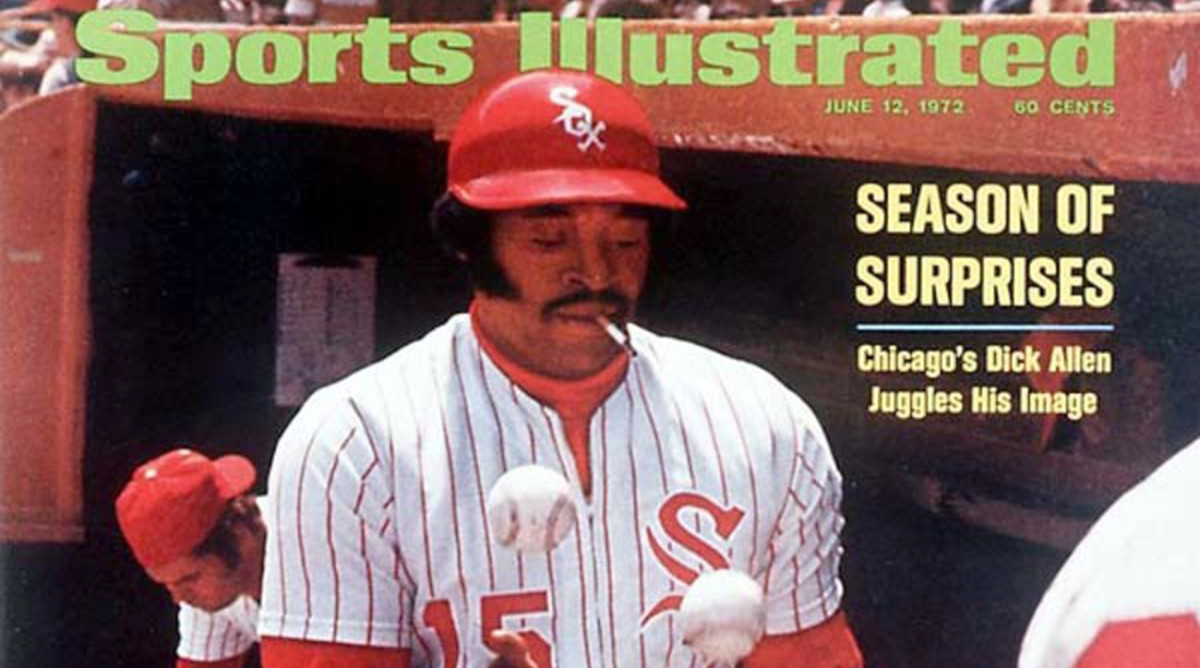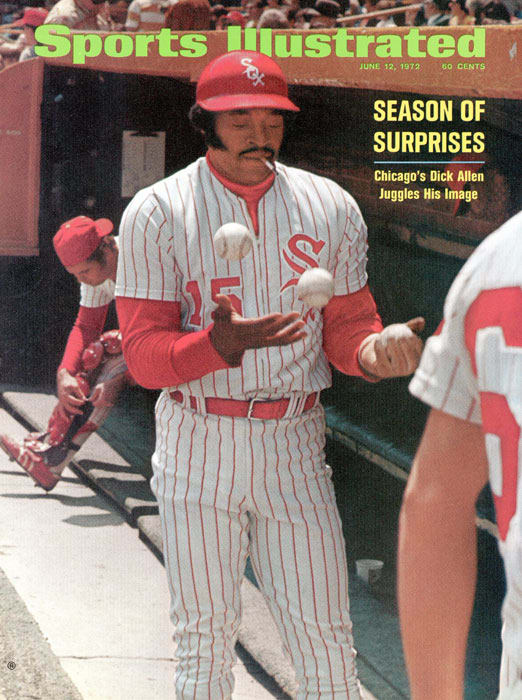The Juggler: The Story Behind the Iconic Dick Allen Cover of 1972
In the photograph, Dick Allen juggles three baseballs casually, as if it’s the easiest task in the world, with a cigarette dangling from the corner of his mouth. It’s hard to imagine that anyone could ever look cooler.
The image ran on the cover of Sports Illustrated in June 1972—a few months before Allen, then first baseman for the Chicago White Sox, was named MVP—and it’s been circulated widely this week after his death at the age of 78. Allen, one of the best hitters of his generation, was a Hall of Fame-caliber player. And the picture of him juggling made for one of the most indelible baseball images of the ‘70s.
SI’s John Iacono was sent to Chicago to photograph Allen—not for the cover, as there was no big feature in the works at the time, but to accompany what was supposed to be a short column or news item. Allen was in his first year with the White Sox. He’d spent the last two seasons with the Dodgers and Cardinals, respectively, and the years prior with the Phillies, where he played in the face of racism from team and fans alike. But in Chicago, he’d hit his stride, playing the best baseball of his career to date.
Iacono was standing on the field before a game when he saw Allen enter the dugout. The photographer got closer, switching from a long lens to a short lens, and suddenly, the player gave him his shot.
“All of a sudden, he started juggling,” Iacono says. “And I thought, Holy crap, this is perfect.”
He thought of how Allen had bounced through baseball for the last few years. The game had been juggling him, or, perhaps, he had been juggling the challenges of the game. And, metaphor aside, it was just a damn good shot.
Iacono took a few photographs of Allen on the field, too. But he was sure that the best ones had been those of him juggling. He figured that one of them would work for whatever kind of piece that the magazine was planning for the next issue. When he came into the office in New York on Monday, however, he was shocked to hear, “Congratulations. Nice cover.”
“I said, ‘Cover, what are you talking about?’” Iacono recalls. “‘Dick Allen? They put him on the cover?’”
Iacono ran down to the layout department to see for himself. One of the photographs of Allen juggling was indeed the cover. There was no Allen-specific feature, and in fact, hardly any baseball coverage at all. A brief piece about the “surprises of the season,” accompanied by a few pages of photographs from around the league, had just one sentence about Allen: “Nomadic and nonchalant Dick Allen (see cover), who could be almost anywhere, is now in Chicago, and surprise of surprises, he seems to like it there, hitting game-winning homers and receiving homage as the White Sox leader.” But the picture was so striking that it had been selected to lead the magazine.
As Iacono looked at the cover image more closely, though, he noticed something that he’d missed before: Allen’s cigarette.
He’d been so focused on the juggling that he hadn’t initially picked up on that detail. But he wondered if it might cause some trouble for Allen. The ‘40s and ‘50s cigarette culture had started to fade, and if players smoked at the ballpark, they were generally supposed to keep it to the tunnel or elsewhere. Some teams frowned upon cigarettes in the dugout.
After the issue came out, Iacono heard that Allen had in fact been reprimanded for allowing his dugout smoking to be captured on the cover of SI—even though the photographer hadn’t noticed the cigarette at the time and neither of them had any idea that it might end up on the cover. But the two had a chance to discuss it a few weeks later, when Iacono was sent back to Chicago to shoot some more White Sox games, and Allen recognized him.
“Allen came walking toward me, and he said, ‘Hey, man, did you take that photo of me?’” Iacono remembers. “I didn’t know what to expect.”
Iacono apologized for inadvertently causing him grief over the dugout cigarette. But Allen smiled. It was fine, he said, because he’d had great publicity from that picture. He loved the cover.
Allen was a “gentleman” about the whole thing, Iacono says, and the story of the surprise cover is one that he’s told often over the decades.
And one last thing: How much of a juggler was Allen?
“Oh, he was pretty good,” says Iacono. “Pretty good.”




































